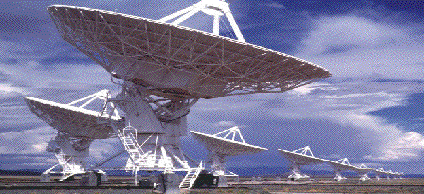| RXTE GOF |
High Energy Groovie Movie | RXTE FAQ |
|---|

High Energy Groove
Energy, Frequency, and Wavelength
Level: Middle School
Author: Kimberly S. Adams, Argyle Middle School, Silver Spring, MD
National Science Education Standards:
http://www.nap.edu/readingroom/books/nses/html/index.html
Physical Science: Transfer of Energy
The sun is a major source of energy for changes on the earth's surface. The sun
loses energy by emitting light. A tiny fraction of that light reaches the
earth, transferring energy from the sun to the earth. The sun's energy
arrives as light with a range of wavelengths, consisting of visible light,
infrared, and ultraviolet radiation.
Science and Technology: Understandings about Science and Technology
Science and technology are reciprocal. Science helps drive technology, as it
addresses questions that demand more sophisticated instruments and provides
principles for better instrumentation and technique. Technology is essential
to science, because it provides instruments and techniques that enable
observations of objects and phenomena that are otherwise unobservable due to
factors such as quantity, distance, location, size, and speed. Technology also
provides tools for investigations, inquiry, and analysis.
Science in Personal and Social Perspectives:Science and Technology in Society
Technology influences society through its products and processes. Technology
influences the quality of life and the ways people act and interact.
Technological changes are often accompanied by social, political, and economic
changes that can be beneficial or detrimental to individuals and to society.
Social needs, attitudes, and values influence the direction of technological
development.
Enduring Understanding:
Waves in the electromagnetic spectrum vary in size from very long radio waves the size of buildings, to very short gamma-rays smaller than the size of the nucleus of an atom.
There is a simple relationship between the frequency, wavelength and energy of an
electromagnetic wave.
Essential question:
What are the relationships observed between wave properties?
Objective: Students will observe the relationship between energy, frequency and wavelength within the electromagnetic spectrum.
Materials:
*You will need to cut out the puzzle pieces ahead of time.
**You may want to laminate the puzzle board and pieces to ensure longevity
Warm-up: Place a small rope or a small tub of water with a stirring device on each table. Instruct students to explore with their materials to see what kind of waves they can produce.
Discuss their findings.
Activity:
Electromagnetic Puzzle
- Pair up students to work on the puzzle.
- Allow 10-15 minutes to complete the puzzle
- Once the students have completed the puzzle they should complete the activity sheet to ensure they have constructed the puzzle correctly.
Review:
Review the activity sheet with the class. Discuss the structure of the
spectrum. Low energy, low frequency, and long wavelengths and located at one
end of the spectrum progress to high energy, high frequency, and short
wavelengths on the other end of the spectrum.
